
The Enchanting Wonders of Salta Province
Discover the diverse landscapes, rich culture, and colonial charm of Salta Province, Argentina's hidden gem in the northwest.
Salta Province, nestled in the northwest of Argentina, is a treasure trove of natural beauty and rich culture. Known for its stunning landscapes that range from lush valleys to arid deserts, Salta offers a diverse array of experiences for every traveler. The capital city, also named Salta, is often referred to as 'La Linda' or 'The Beautiful' due to its charming colonial architecture and vibrant atmosphere. Visitors can stroll through its cobbled streets, marvel at the historic cathedrals, and indulge in delicious Argentine cuisine at local cafes and restaurants. Beyond the city, Salta Province boasts some of the most breathtaking natural attractions in Argentina. The Quebrada de Humahuaca, a UNESCO World Heritage site, is a stunning mountain valley with multi-colored rock formations that tell a story of millions of years. Nature enthusiasts will also find the Calchaquí Valleys captivating, with their panoramic vistas, vineyards, and ancient ruins. For a truly unforgettable experience, take a ride on the Tren a las Nubes (Train to the Clouds), one of the highest railways in the world, offering spectacular views of the Andean mountains. Salta is also a gateway to exploring the rich cultural heritage of the indigenous peoples of the region. Local markets are filled with vibrant textiles, handcrafted goods, and traditional music, providing a glimpse into the enduring traditions and lifestyles of the native communities. Festivals and celebrations are frequent, showcasing folkloric dances, music, and local customs. Whether you're drawn by the allure of the Andes, the charm of colonial towns, or the vibrant local culture, Salta Province promises a memorable and enriching journey.
Local tips in Salta Province
- Visit in the spring or fall for the best weather and fewer tourists.
- Try the local empanadas, considered some of the best in Argentina.
- Book tickets in advance for the Tren a las Nubes, as they sell out quickly.
- Take a guided tour to fully appreciate the history and geology of Quebrada de Humahuaca.
- Stay in a traditional estancia for an authentic Argentine experience.
The Enchanting Wonders of Salta Province
Salta Province, nestled in the northwest of Argentina, is a treasure trove of natural beauty and rich culture. Known for its stunning landscapes that range from lush valleys to arid deserts, Salta offers a diverse array of experiences for every traveler. The capital city, also named Salta, is often referred to as 'La Linda' or 'The Beautiful' due to its charming colonial architecture and vibrant atmosphere. Visitors can stroll through its cobbled streets, marvel at the historic cathedrals, and indulge in delicious Argentine cuisine at local cafes and restaurants. Beyond the city, Salta Province boasts some of the most breathtaking natural attractions in Argentina. The Quebrada de Humahuaca, a UNESCO World Heritage site, is a stunning mountain valley with multi-colored rock formations that tell a story of millions of years. Nature enthusiasts will also find the Calchaquí Valleys captivating, with their panoramic vistas, vineyards, and ancient ruins. For a truly unforgettable experience, take a ride on the Tren a las Nubes (Train to the Clouds), one of the highest railways in the world, offering spectacular views of the Andean mountains. Salta is also a gateway to exploring the rich cultural heritage of the indigenous peoples of the region. Local markets are filled with vibrant textiles, handcrafted goods, and traditional music, providing a glimpse into the enduring traditions and lifestyles of the native communities. Festivals and celebrations are frequent, showcasing folkloric dances, music, and local customs. Whether you're drawn by the allure of the Andes, the charm of colonial towns, or the vibrant local culture, Salta Province promises a memorable and enriching journey.
When is the best time to go to Salta Province?
Iconic landmarks you can’t miss
San Bernardo's Hill
Discover the breathtaking views and vibrant hiking trails at San Bernardo's Hill in Salta, Argentina, a must-visit for nature enthusiasts and adventure seekers.
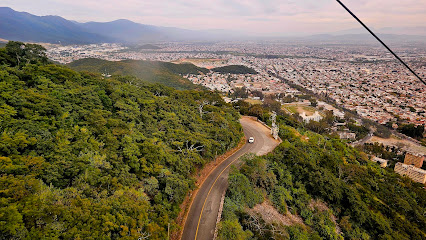
July 9th Square
Explore the vibrant July 9th Square in Salta, Argentina, a cultural hub filled with history, beautiful architecture, and lively local events.

Monument General Martin Miguel de Guemes
Discover the Monument General Martin Miguel de Guemes in Salta, a historical landmark celebrating a national hero amidst stunning gardens and rich Argentine culture.
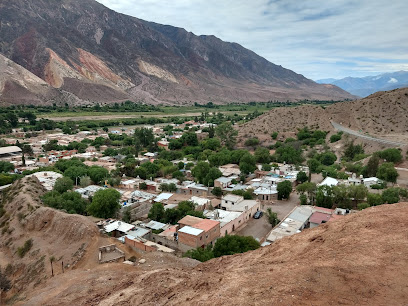
Quebrada de San Lorenzo
Explore the breathtaking Quebrada de San Lorenzo in Salta, Argentina, a nature lover's paradise filled with stunning landscapes and diverse wildlife.
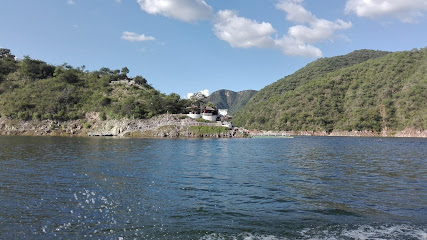
Museum of High Altitude Archaeology
Explore the ancient treasures of the Andes at the Museum of High Altitude Archaeology in Salta, a captivating journey into Inca civilization.
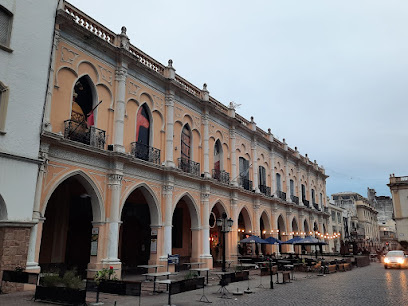
Guemes Museum
Explore the captivating history of Argentina at Güemes Museum in Salta, dedicated to the life of the legendary General Martín Miguel de Güemes.
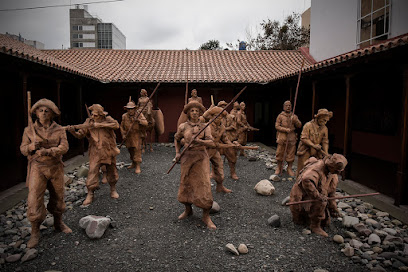
Catedral Basílica de Salta
Discover the breathtaking beauty and rich history of the Catedral Basílica de Salta, a must-visit landmark in Argentina's picturesque Salta.
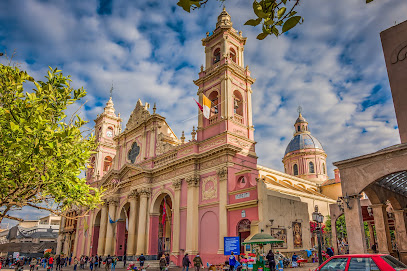
Plaza Belgrano
Explore Salta's Plaza Belgrano: A beautiful city park blending nature, culture, and community spirit in Argentina's scenic heart.
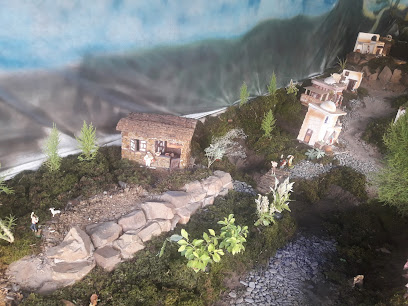
Plaza Gral. Don Martin Miguel de Guemes
Explore the historical and cultural splendor of Plaza Gral. Don Martin Miguel de Guemes, a vibrant park and monument in the heart of Salta, Argentina.
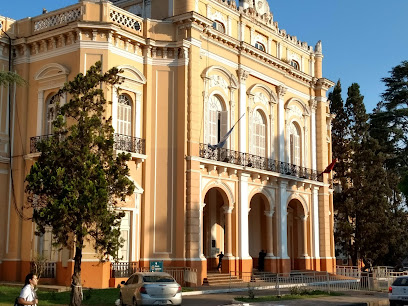
20 de Febrero Monument
Explore the 20 de Febrero Monument in Salta, a stunning tribute to Argentine independence, surrounded by beautiful gardens and rich history.
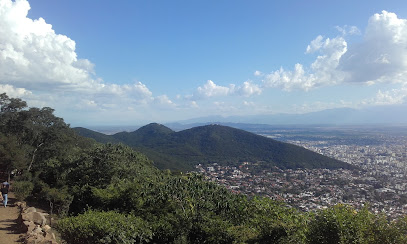
Parque Nacional los Cardones
Discover the breathtaking landscapes of Parque Nacional los Cardones, home to towering cacti and diverse wildlife in Argentina's stunning Salta Province.
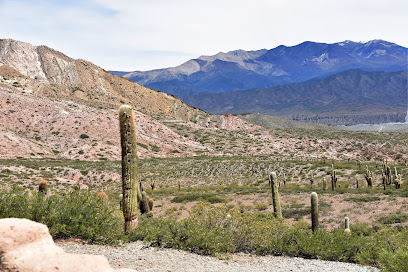
History Museum of the North
Discover the captivating history and cultural heritage of Northern Argentina at the History Museum of the North, a must-visit destination in Salta.
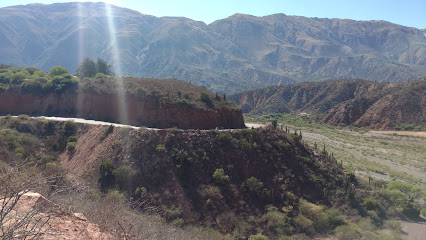
Mirador De La Cruz
Experience unparalleled views and the natural beauty of Iruya at Mirador De La Cruz, a must-visit observation deck in Argentina's stunning Salta Province.
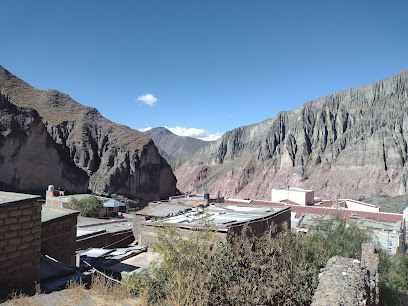
Shells' Ravine
Explore the breathtaking Shells' Ravine in Cafayate, where stunning landscapes and vibrant wildlife await every nature lover.

Virgen de los tres cerritos - Salta
Experience the serene beauty and spiritual heritage of Virgen de los Tres Cerritos in Salta, Argentina, a breathtaking sanctuary offering stunning views.
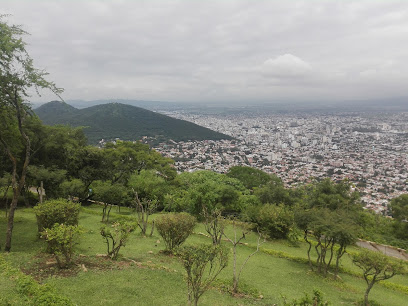
Unmissable attractions to see
July 9th Square
Explore the vibrant July 9th Square in Salta, Argentina, a hub of culture, history, and natural beauty surrounded by stunning architecture.

San Bernardo's Hill
Explore San Bernardo's Hill in Salta, Argentina: A breathtaking tourist attraction with stunning views, hiking trails, and local dining experiences.
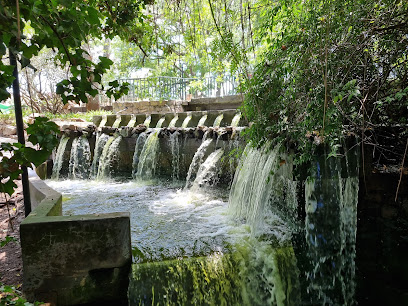
Monument General Martin Miguel de Guemes
Discover the iconic Monument General Martin Miguel de Guemes in Salta, a stunning tribute to Argentina's independence hero amidst breathtaking landscapes.
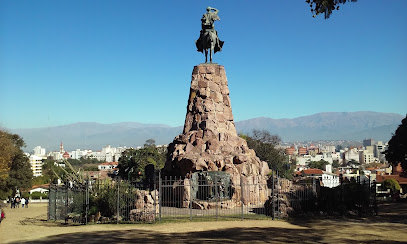
Quebrada de San Lorenzo
Explore the stunning landscapes and vibrant rock formations of Quebrada de San Lorenzo, a premier hiking destination in Salta Province, Argentina.
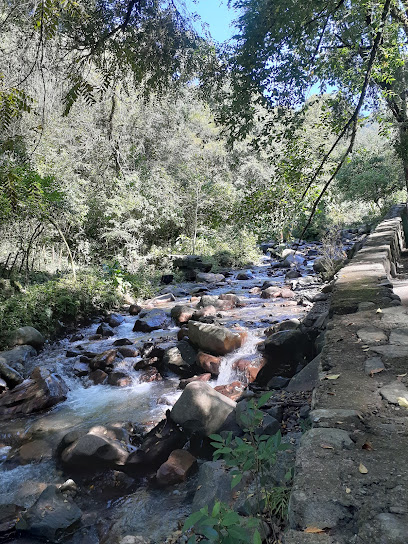
Museum of High Altitude Archaeology
Discover the ancient treasures of the Andes at Salta's Museum of High Altitude Archaeology, where rich history meets breathtaking culture.
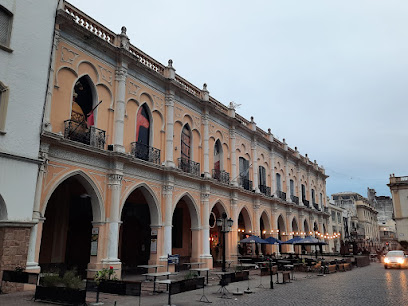
Parque Nacional los Cardones
Discover the stunning landscapes and unique flora of Parque Nacional los Cardones, a must-visit national park in Salta, Argentina.
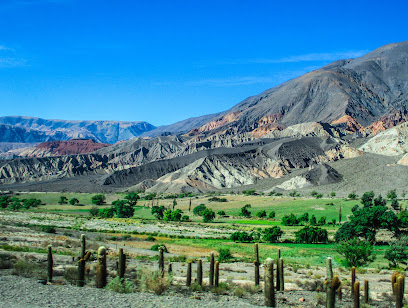
Piedra del Molino
Discover the breathtaking beauty of Piedra del Molino in Salta, Argentina, a stunning natural attraction that showcases the magnificence of the Andes.

History Museum of the North
Explore the fascinating history and cultural heritage of northern Argentina at the History Museum of the North in Salta.

National University of Salta Museum of Natural Sciences
Discover the vibrant biodiversity of Argentina at the National University of Salta Museum of Natural Sciences, a hub for education and exploration.
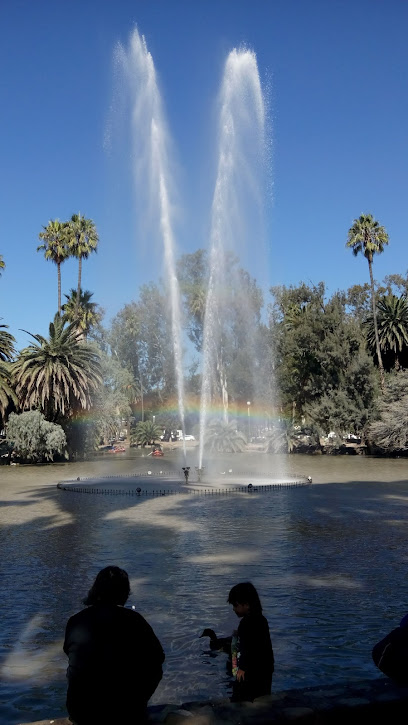
RAKI Parque Aéreo
Experience the ultimate aerial adventure at RAKI Parque Aéreo in Salta, Argentina - a thrilling destination for nature lovers and adventure seekers.
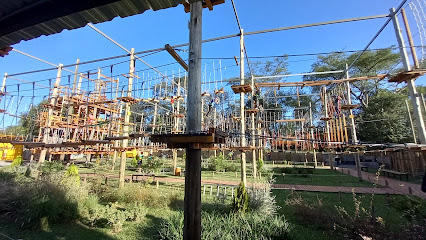
El Divisadero
Discover the breathtaking landscapes and vibrant trails of El Divisadero, a premier tourist attraction in Salta Province, Argentina, perfect for nature lovers.

Cueva del Suri
Discover the awe-inspiring Cueva del Suri in Cafayate, a geological wonder showcasing stunning formations and the beauty of Salta's natural landscape.
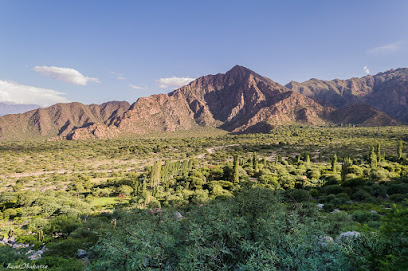
Rio Colorado Waterfalls
Experience the breathtaking beauty of the Rio Colorado Waterfalls in Cafayate, a must-visit natural attraction in Argentina's Salta Province.
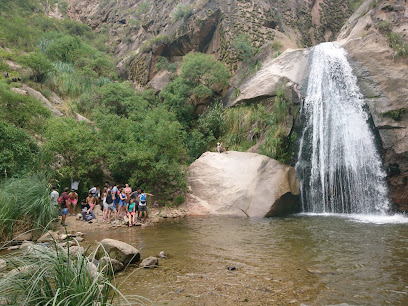
Museo de Arte Contemporáneo - Salta, Argentina
Discover the vibrant world of contemporary art at the Museo de Arte Contemporáneo in Salta, Argentina, a cultural gem for art enthusiasts and travelers alike.
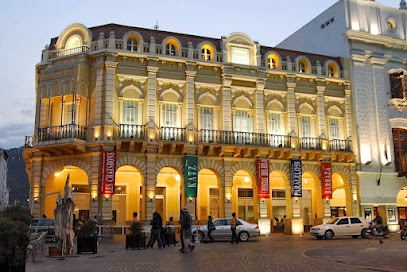
Cascadas de Campo Quijano
Discover the breathtaking beauty of Cascadas de Campo Quijano, a stunning waterfall oasis in Salta Province, Argentina, perfect for nature lovers and adventurers.
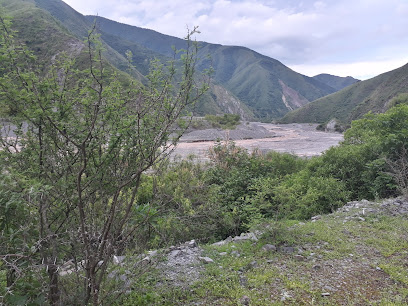
Essential places to dine
Doña Salta
Discover the heart of Argentinian cuisine at Doña Salta in Salta - where every dish tells a story.
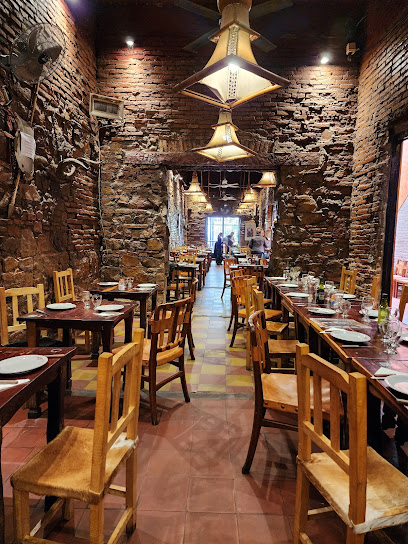
La Casona del Molino
Discover the essence of Argentine cuisine at La Casona del Molino - your gateway to authentic Creole flavors in Salta.
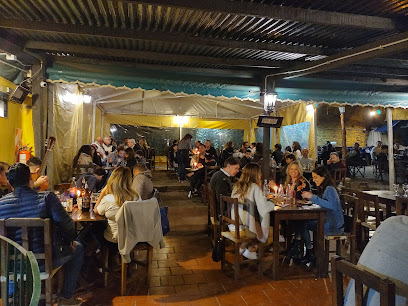
Peña La Vieja Estación
Experience authentic Argentine cuisine at Peña La Vieja Estación, where local flavors meet vibrant culture in Salta's premier gastropub.
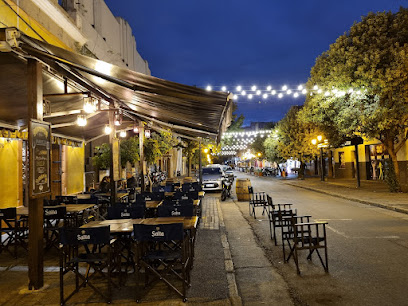
La Nueva Mega Peña La Panadería del Chuña
Savor authentic Argentinian cuisine at La Nueva Mega Peña La Panadería del Chuña while enjoying live music and vibrant cultural performances.
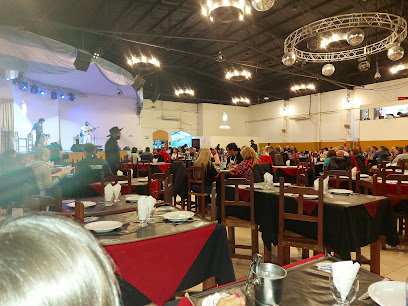
El Charrúa Restaurante y Parrillada
Discover authentic Argentine cuisine at El Charrúa Restaurante y Parrillada in Salta – where every bite tells a story!
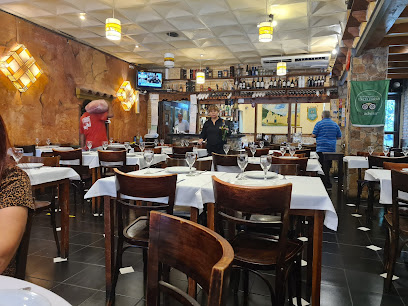
Trattoria Mamma Mia
Savor authentic Italian cuisine at Trattoria Mamma Mia in Salta – where every dish tells a delicious story.
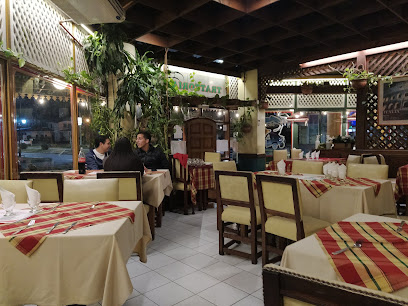
El Charrúa (Paseo Güemes)
Experience authentic Argentinian cuisine at El Charrúa in Salta, where vibrant flavors and cultural heritage come together in every dish.
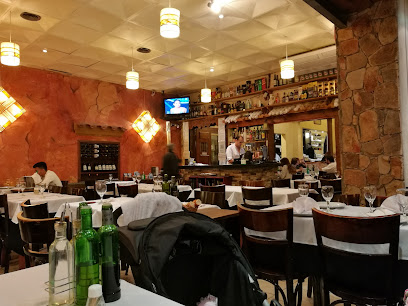
Jovi Dos
Discover Jovi Dos in Salta: where authentic Argentine flavors come alive in every bite.
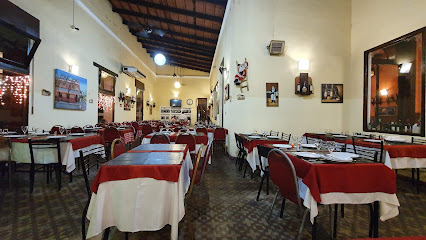
La Criollita
Experience authentic Argentine cuisine at La Criollita in Salta – home to some of the best empanadas you'll ever taste.
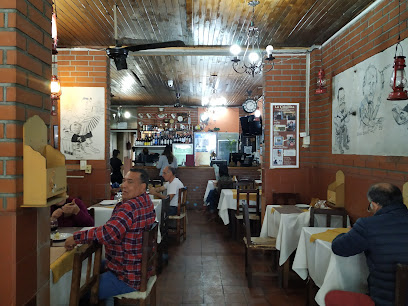
Café del Tiempo
Experience the vibrant flavors of Argentina at Café del Tiempo in Salta - where culinary tradition meets modern gastronomy.
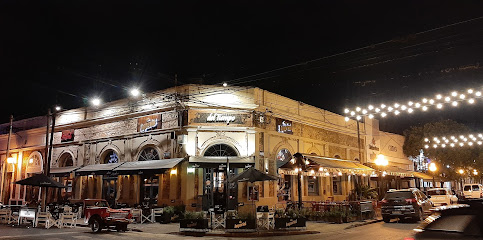
Viejo Jack II Parrilla
Experience the authentic taste of Argentina at Viejo Jack II Parrilla in Salta, where tradition meets flavor in every delicious bite.
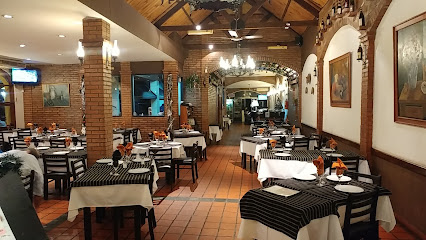
Aires Caseros - Cocina Regional
Experience authentic Argentine cuisine at Aires Caseros, where traditional flavors meet modern dining in the heart of Salta.

La Posada Restaurant
Discover authentic Argentinian flavors at La Posada Restaurant in Salta – where tradition meets modern dining.
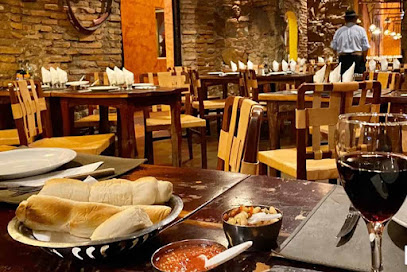
Adobe Cocina Regional
Experience authentic Argentine cuisine at Adobe Cocina Regional in Salta – where every dish tells a story.
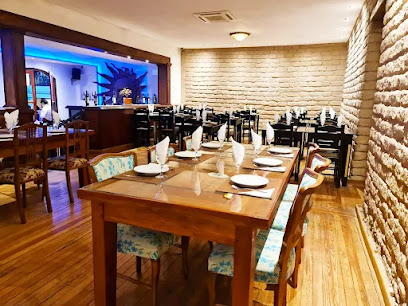
802 Cocina A Las Brasas
Discover the heart of Argentine cuisine at 802 Cocina A Las Brasas in Salta—where tradition meets flavor in every dish.
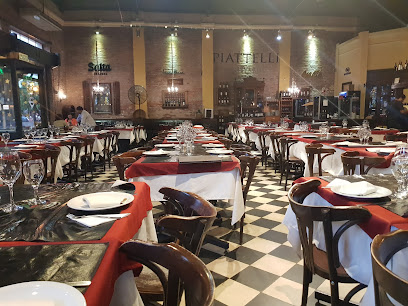
Markets, malls and hidden boutiques
Alto NOA Shopping
Experience the vibrant culture of Salta at Alto NOA Shopping - your ultimate destination for shopping, dining, and entertainment in Argentina.

Portal Salta Shopping
Discover the ultimate shopping experience at Portal Salta Shopping Mall, featuring local and international brands in a vibrant atmosphere.
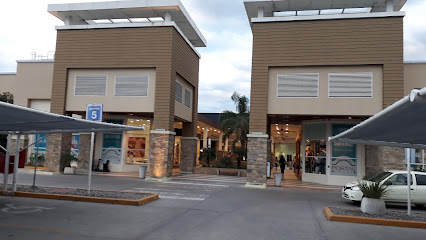
Mercado Artesanal de Salta
Discover artisan crafts and local flavors at Mercado Artesanal de Salta, the cultural heart of Salta for every traveler.
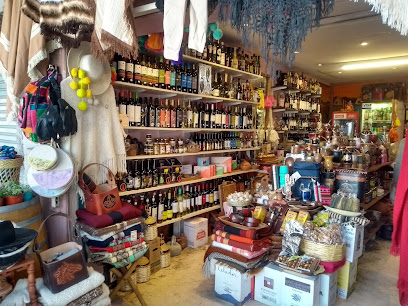
Store San Juan - Salta
Discover the essence of Argentine fashion at Store San Juan in Salta, a must-visit clothing store for stylish tourists.
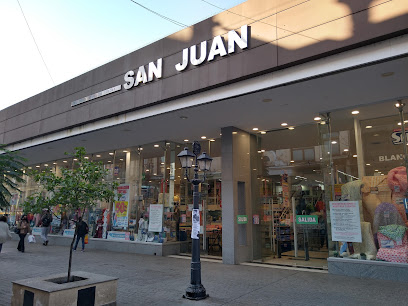
Feria Americana
Explore Feria Americana: A vibrant clothing store in Salta offering unique apparel that captures the essence of Argentine style and culture.
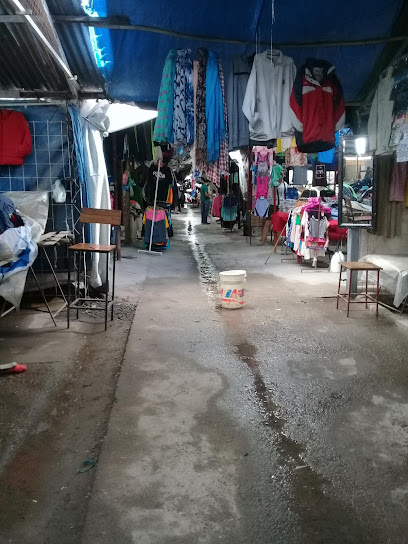
El Palacio Galerías
Discover a vibrant shopping experience at El Palacio Galerías in Salta, where local charm meets international brands.

Divinas Salta
Explore the essence of Argentine fashion at Divinas Salta, featuring stylish clothing, boots, and unique accessories in the heart of Salta.
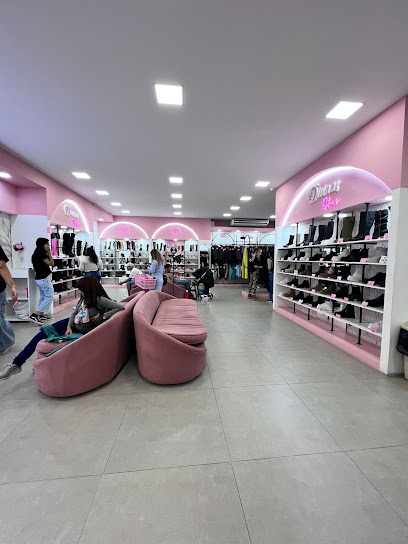
Le Utthe
Experience the ultimate in Argentine fashion at Le Utthe, Salta's go-to clothing store for all ages and styles.
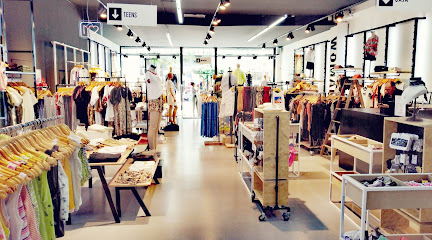
Shopping Salta
Discover Shopping Salta, a vibrant shopping mall in the heart of Salta, Argentina, offering a diverse mix of shops, dining, and entertainment.
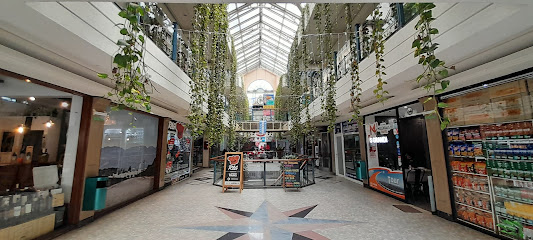
Free Shop SRL
Explore unique clothing and accessories at Free Shop SRL in Salta, a vibrant shopping haven for fashion lovers and tourists alike.
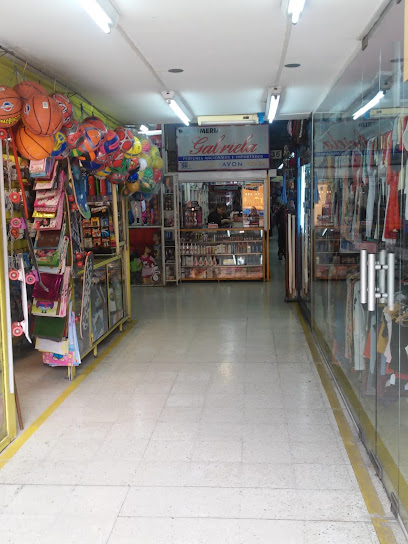
Mandala Accesorios
Explore Mandala Accesorios in Salta for unique fashion accessories that blend local culture with contemporary style.
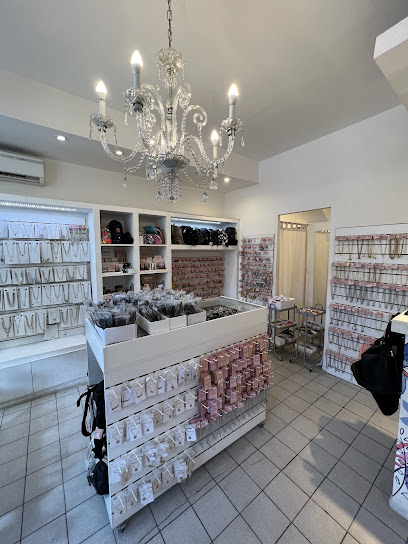
Salta Gallery Shop
Explore the vibrant Salta Gallery Shop for unique local crafts, artisanal goods, and unforgettable souvenirs in the heart of Salta.
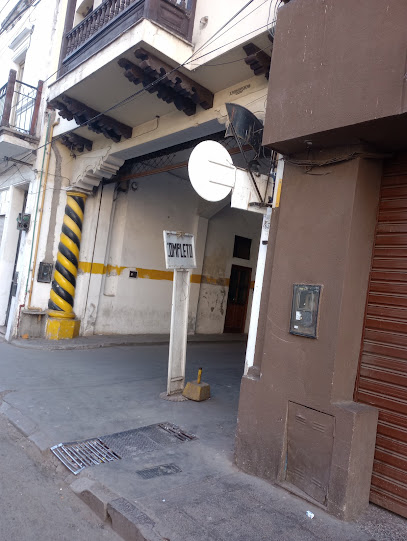
Tienda kintsugi
Explore the vibrant cultural fusion of Japan and China at Tienda Kintsugi, Salta's premier gift shop and anime haven.
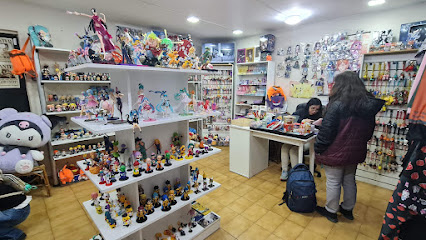
Gift Indumentaria
Explore the vibrant fashion scene in Salta at Gift Indumentaria, where local culture meets contemporary style in a unique shopping experience.
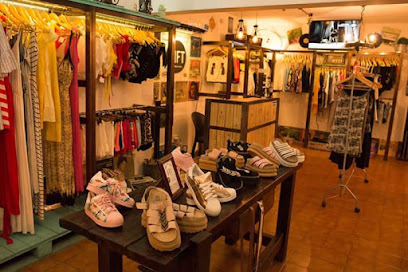
adidas Store Salta
Shop the latest sportswear and equipment at the adidas Store in Salta, where style meets performance in the heart of Argentina.
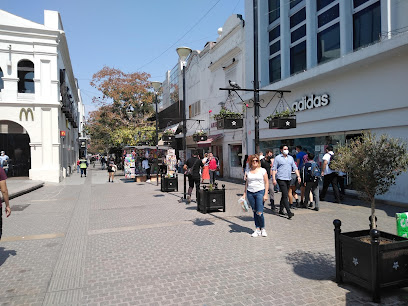
Essential bars & hidden hideouts
Soho Bar & resto
Experience the vibrant flavors of Argentine grilling at Soho Bar & Resto in Salta, where culinary delights meet a lively atmosphere.

Cerveza Patagonia - Refugio Salta
Discover authentic Argentine craft beer at Cerveza Patagonia - Refugio Salta, where local flavors and vibrant ambiance come together.
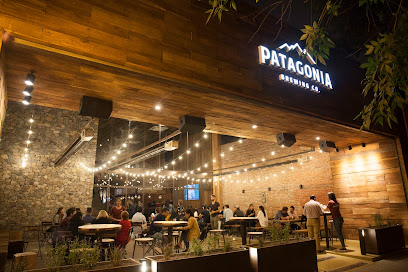
Temple Craft Salta
Discover the vibrant flavors of craft beer at Temple Craft Salta, the ultimate brewpub experience in Argentina's charming city of Salta.
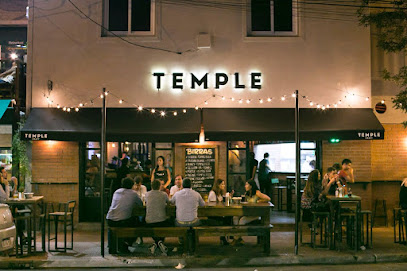
La Birrería Salta
Experience the vibrant craft beer culture at La Birrería Salta, where local flavors and a lively atmosphere await you.
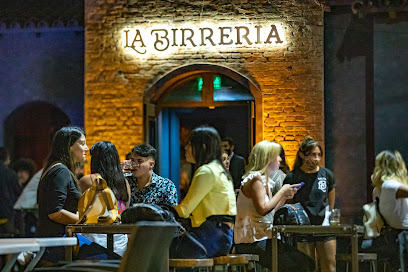
Amnesia Pub&Music
Discover the vibrant nightlife of Salta at Amnesia Pub & Music - a unique blend of bar, disco, and gastropub experiences.
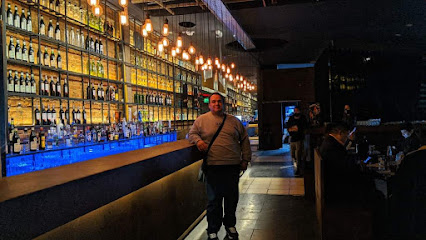
Baum Salta Bar
Explore the local brew culture at Baum Salta Bar, a vibrant brewpub offering crafted beers and delicious cuisine in the heart of Salta.
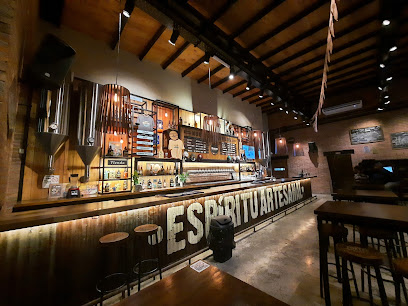
Zeppelin Resto Bar Salta
Discover Zeppelin Resto Bar: where delicious grill cuisine meets vibrant nightlife in the heart of Salta, Argentina.
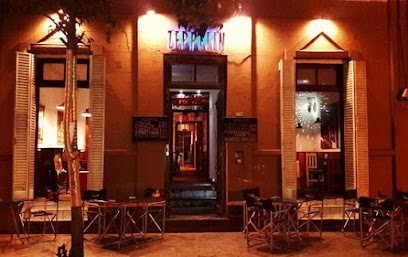
Grizzly Bar & Burger
Discover the ultimate burger experience in Salta at Grizzly Bar & Burger, where flavor meets a vibrant atmosphere for unforgettable dining.
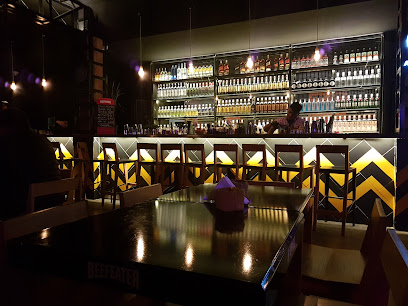
Peppers
Discover Peppers in Salta, where expertly grilled meats and local flavors come together in a warm, inviting atmosphere perfect for any occasion.
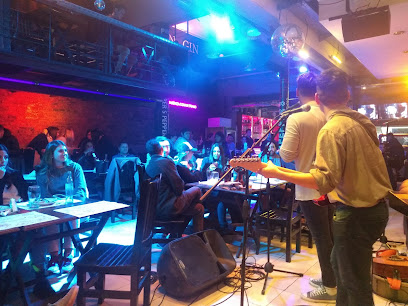
El Balcón Resto Bar
Experience the vibrant flavors of Salta at El Balcón Resto Bar, where delicious pizzas and a lively atmosphere await every visitor.
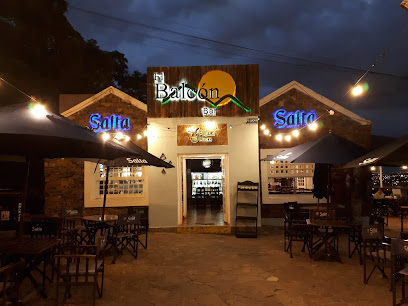
Macondo Bar
Discover the unique charm of Macondo Bar in Salta, where vibrant nightlife and local culture come together for an unforgettable experience.
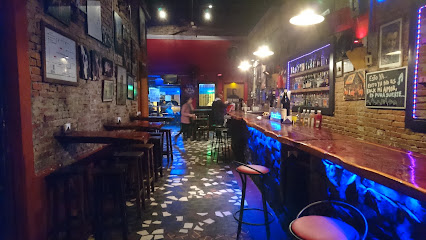
Glou Gintoneria
Discover Glou Gintoneria, Salta's premier bar for gin lovers, offering a lively atmosphere and an extensive drink selection in the heart of the city.
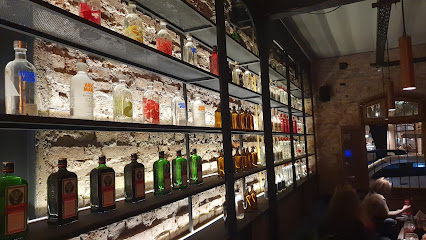
Bunker Owl
Experience the vibrant atmosphere and innovative cuisine at Bunker Owl, Salta's top gastropub, where traditional flavors meet modern dining.

Hangar Bar
Experience the vibrant nightlife at Hangar Bar in Salta, where local flavors and live music create an unforgettable atmosphere.

Bruto Craft Bar
Experience the lively ambiance and exquisite flavors at Bruto Craft Bar in Salta, where craft beers and creative cocktails meet a vibrant nightlife.
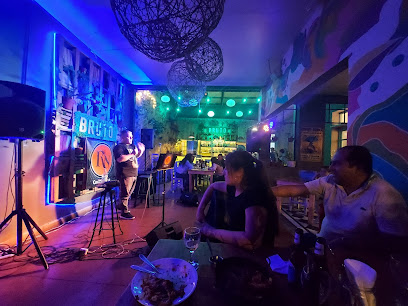
Local Phrases about Salta Province
-
- HelloHola
[oh-lah] - GoodbyeAdiós
[ah-dee-ohs] - YesSí
[see] - NoNo
[noh] - Please/You're welcomePor favor
[por fah-vor] - Thank youGracias
[grah-see-as] - Excuse me/SorryPerdón
[pair-dohn] - How are you?¿Cómo estás?
[koh-moh ehs-tahs] - Fine. And you?Bien. ¿Y tú?
[bee-ehn. ee too] - Do you speak English?¿Hablas inglés?
[ah-blahs een-glehs] - I don't understandNo entiendo
[noh ehn-tyen-doh]
- HelloHola
-
- I'd like to see the menu, pleaseMe gustaría ver el menú, por favor
[meh goos-tah-ree-ah bair ehl meh-noo, por fah-vor] - I don't eat meatNo como carne
[noh koh-moh kahr-neh] - Cheers!¡Salud!
[sah-loohd] - I would like to pay, pleaseMe gustaría pagar, por favor
[meh goos-tah-ree-ah pah-gar, por fah-vor]
- I'd like to see the menu, pleaseMe gustaría ver el menú, por favor
-
- Help!¡Ayuda!
[ah-yoo-dah] - Go away!¡Vete!
[veh-teh] - Call the Police!¡Llama a la Policía!
[yah-mah ah lah poh-lee-see-ah] - Call a doctor!¡Llama a un médico!
[yah-mah ah oon meh-dee-koh] - I'm lostEstoy perdido/a
[ehs-toy pair-dee-doh/dah] - I'm illEstoy enfermo/a
[ehs-toy ehn-fehr-moh/dah]
- Help!¡Ayuda!
-
- I'd like to buy...Me gustaría comprar...
[meh goos-tah-ree-ah kohm-prahr...] - I'm just lookingSólo estoy mirando
[soh-loh ehs-toy mee-rahn-doh] - How much is it?¿Cuánto cuesta?
[kwan-toh kwehs-tah] - That's too expensiveEsto es muy caro
[ehs-toh ehs mwee kah-roh] - Can you lower the price?¿Puedes bajar el precio?
[pweh-dehs bah-har ehl pree-syoh]
- I'd like to buy...Me gustaría comprar...
-
- What time is it?¿Qué hora es?
[keh oh-rah ehs] - It's one o'clockEs la una
[ehs lah oo-nah] - Half past (10)Media (diez)
[meh-dee-ah (dyehs)] - MorningMañana
[mah-nyah-nah] - AfternoonTarde
[tahr-deh] - EveningNoche
[noh-cheh] - YesterdayAyer
[ah-yehr] - TodayHoy
[oy] - TomorrowMañana
[mah-nyah-nah] - 1Uno
[oo-noh] - 2Dos
[dohs] - 3Tres
[trehs] - 4Cuatro
[kwah-troh] - 5Cinco
[seen-koh] - 6Seis
[says] - 7Siete
[syeh-teh] - 8Ocho
[oh-choh] - 9Nueve
[nweh-veh] - 10Diez
[dyehs]
- What time is it?¿Qué hora es?
-
- Where's a/the...?¿Dónde está...?
[dohn-deh ehs-tah] - What's the address?¿Cuál es la dirección?
[kwal ehs lah dee-rek-syon] - Can you show me (on the map)?¿Puedes mostrarme (en el mapa)?
[pweh-dehs mohs-trar-meh (ehn ehl mah-pah)] - When's the next (bus)?¿Cuándo es el próximo (colectivo)?
[kwan-doh ehs ehl proh-ksy-moh (koh-lehk-tee-voh)] - A ticket (to ....)Un boleto (a ....)
[oon boh-leh-toh (ah)]
- Where's a/the...?¿Dónde está...?
History of Salta Province
-
Before European contact, the region now known as Salta was inhabited by various indigenous groups, including the Atacama and Diaguita peoples. They developed advanced agricultural techniques and built impressive settlements, such as the Pucará de Tilcara.
-
In 1582, the Spanish conquistador Hernando de Lerma founded the city of Salta. The city quickly became an important outpost and trading hub connecting the Viceroyalty of Peru with the Río de la Plata region.
-
Salta played a crucial role in Argentina's War of Independence from Spain. General Martín Miguel de Güemes led local gaucho militias in guerilla warfare against Spanish forces, securing the region's freedom. Güemes is celebrated as a national hero and is buried in the city of Salta.
-
On February 20, 1813, the Battle of Salta took place, where Argentine forces led by General Manuel Belgrano defeated the Spanish royalists. This victory was pivotal in securing the independence of the northern provinces.
-
In the late 19th and early 20th centuries, the expansion of the railway network transformed Salta into a critical transportation hub. The famous Tren a las Nubes (Train to the Clouds), one of the highest railways in the world, was established during this period and remains a popular tourist attraction.
-
Salta is known for its rich cultural heritage, blending indigenous and Spanish influences. The region is famous for its traditional music, including zamba and chacarera, as well as its vibrant festivals like the Fiesta Nacional de la Pachamama and the Carnaval de Salta.
-
Today, Salta is a thriving province that attracts tourists from around the globe. Visitors come to explore its colonial architecture, stunning landscapes, and rich cultural traditions. The city of Salta, known as 'La Linda' (The Beautiful), serves as the gateway to the region's many attractions.
Salta Province Essentials
-
Salta Province is located in the northwest region of Argentina. The main entry point is the Martín Miguel de Güemes International Airport (SLA), situated approximately 10 kilometers southwest of the city of Salta. Direct flights are available from Buenos Aires, Córdoba, and other major Argentinian cities. From the airport, you can take a taxi or a shuttle bus to reach your destination. Long-distance buses also connect Salta with other provinces and neighboring countries, offering a more scenic route.
-
Public transportation within Salta Province includes buses and taxis. The bus system is extensive and affordable, covering urban and rural areas. Taxis are plentiful and can be hailed on the street or booked via phone. For more flexibility, consider renting a car to explore the province at your own pace. Note that driving is on the right side, and road conditions may vary, especially in rural areas.
-
The official currency is the Argentine Peso (ARS). Credit cards are widely accepted in hotels, restaurants, and larger shops, but it's advisable to carry cash for smaller establishments and markets. ATMs are available in cities and towns, but fees may apply for international cards. Currency exchange services are available at the airport, banks, and authorized exchange offices.
-
Salta Province is generally safe for tourists, but it's important to stay vigilant. Areas like the central bus terminal and certain neighborhoods in the outskirts of Salta city have higher crime rates, particularly targeting tourists. Avoid displaying valuables and be cautious when using ATMs. Stick to well-lit and populated areas, especially at night.
-
In case of emergency, dial 911 for police, medical, or fire assistance. Hospitals and clinics are available in major towns, with the main hospital being the Hospital San Bernardo in Salta city. Pharmacies are widely available for minor health issues. It's recommended to have travel insurance that covers medical expenses. For lost or stolen items, report to the nearest police station.
-
Fashion: Do dress comfortably and modestly. Lightweight clothing is ideal due to the warm climate, but bring layers for cooler evenings. Religion: Do respect religious sites. Cover your shoulders and knees when visiting churches. Public Transport: Do have exact change for bus fares. Don't eat or drink on public transport. Greetings: Do greet people with a handshake or a kiss on the cheek. Eating & Drinking: Do try local dishes like empanadas and tamales. Don't refuse food offered by locals; it's considered impolite.
-
To experience Salta Province like a local, visit the traditional markets such as Mercado San Miguel in Salta city for fresh produce and artisan goods. Engage with locals, who are known for their hospitality and willingness to share their culture. Don’t miss the Train to the Clouds (Tren a las Nubes) for a scenic journey through the Andes. Additionally, participating in local festivals and events can provide an authentic cultural experience.
Trending Landmarks in Salta Province
-
San Bernardo's Hill
-
July 9th Square
-
Monument General Martin Miguel de Guemes
-
Quebrada de San Lorenzo
-
Museum of High Altitude Archaeology
-
Guemes Museum
-
Catedral Basílica de Salta
-
Plaza Belgrano
-
Plaza Gral. Don Martin Miguel de Guemes
-
20 de Febrero Monument
-
Parque Nacional los Cardones
-
History Museum of the North
-
Mirador De La Cruz
-
Shells' Ravine
-
Virgen de los tres cerritos - Salta
Nearby Cities to Salta Province
-
Things To Do in San Miguel de Tucumán
-
Things To Do in Tarija
-
Things To Do in San Pedro de Atacama
-
Things To Do in Uyuni
-
Things To Do in Antofagasta
-
Things To Do in Potosi
-
Things To Do in Córdoba
-
Things To Do in Sucre
-
Things To Do in Asuncion
-
Things To Do in Aregua
-
Things To Do in Ypacarai
-
Things To Do in San Bernardino
-
Things To Do in Iquique
-
Things To Do in San Juan
-
Things To Do in La Serena













